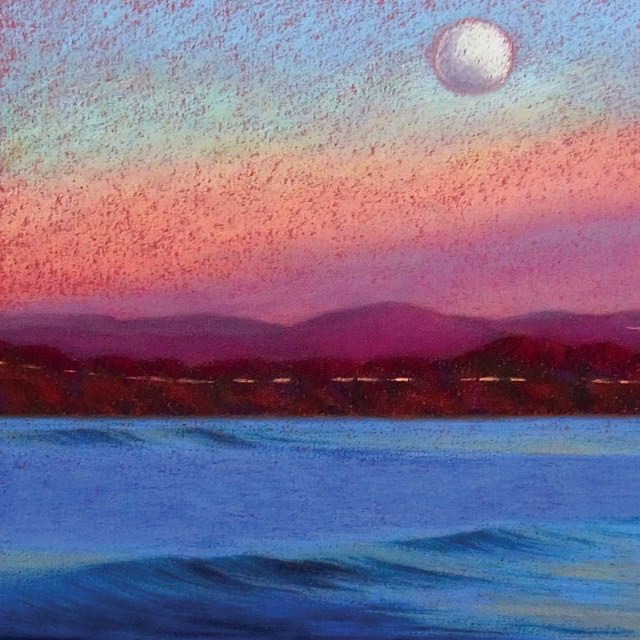“When I was growing up, Manchester United was my favourite team, and George Best was the star player in the late ‘60s and early ‘70s,” Gedge says. “We were completely terrified when we met him because of his legendary status – and I don’t think he really knew who we were,” Gedge recalls. “I’m not sure he even knew that we’d called our album after him. But it was one of the highlights of my life!”
The Wedding Present had formed from the ashes of Gedge’s previous band, The Lost Pandas, in 1984. “There was a link between The Lost Pandas and The Wedding Presents, in that that band was almost a practice band for The Wedding Present,” Gedge says. “I’d started The Lost Pandas in Leeds a few years before with my then girlfriend, who was the drummer, and the bass player, Keith Gregory, became The Wedding Present’s bass player. When she left, we became The Wedding Present. So it wasn’t so much a change in musical direction, rather a change in members of the band. But when the new members joined, the music did change – I suppose the music became a bit faster, a bit more punky. So at that point it made sense to change the name to The Wedding Present,” Gedge says.
The Wedding Present released a series of singles, attracting the attention of legendary English radio announcer and DJ John Peel – who would go onto become one of the band’s highest profile champions – and establishing Gedge’s reputation for blending romantic lament and post-punk noise. “People have asked me previously if the lyrics were cathartic, but I’ve never really felt that,” Gedge says. “I grew up listening to that type of music, where love affairs and relationships were the main subject for the songs, but I’m also really interest in those topics, almost to the point of being slightly obsessed – what people say, and why they say it. Or the beginning of a relationship, the end of a relationship and the journey that it takes. They’re just great stories,” Gedge says. “I’ve tried to write songs on other subjects, but I suppose I’ve never been quiet as happy with it as I have with a straight forward love song.”
While the release of George Best would cement The Wedding Present’s reputation as one of the leading bands in the ‘80s English post-punk scene, the coincidence of changing band composition and musical direction would come to be part of The Wedding Present’s modus operandi. “The change in membership has been both a source of frustration, but has also helped the band stay fresh,” Gedge says. “Obviously when someone’s in a band it’s quite an intimate relationship, so when someone leaves it can be quite an upheaval, and it can be quite sad, and it can be difficult to get someone else in to fill that role. But if I’m honest, I think it has benefited the group, because whenever we have a lineup change people will come in with a fresh set of influences and aspirations, and I think the band goes through a bit of a re-birth. So even though The Wedding Present has been around for over 20 years, it feels like I’ve been in a series of mini-groups. And that’s made each album have its own unique personality and style.”
In 1992 The Wedding Present embarked on a year-long project to release a limited edition single each month, with the B-side of each single featuring a cover (the A-sides and B-sides would eventually be released as Hit Parade 1 and Hit Parade 2). The choice of covers was eclectic, ranging from The Go Betweens’ Cattle and Cane, to Don’t Cry No Tears from Neil Young and Crazy Horse, to Issac Hayes’ Theme From Shaft to Elton John’s Step Into Christmas. “When we started we were picking our favourite bands, and our favourite songs, but after we started it felt like it wasn’t the appropriate way to do it,” Gedge says. “We started thinking further afield, and into different genres – it was almost like ‘what shouldn’t we cover’, and try and see if it worked. Once we crossed that hurdle of looking outside our particular tastes, I think that influenced our music subsequently. We’ve looked at music where we can do things differently, and different from other Wedding Present songs,” Gedge says.
In 1997 Gedge placed The Wedding Present on the back burner, recalibrating his creative endeavours into the Cinerama project. In 2004, while putting together material for the next Cinerama record, Gedge realised the music was moving toward The Wedding Present. “We did a session with John Peel as Cinerama, and even the engineers said it was like The Wedding Present,” Gedge says. With a few more lineup changes, The Wedding Present have continued to the present day, releasing Take Fountain in 2005, El Rey in 2008 and Valentina in 2012. “I think with my lyrics, I’ve honed my style, although I’ve grown older and more experienced,” Gedge says. “But musically, it’s a bit of a mish-mash, and totally unplanned. We tend now to evolve in a random direction.”
BY PATRICK EMERY

